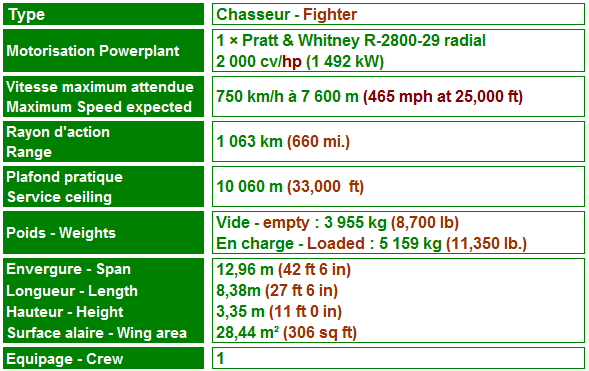XP-54, XP-55, XP-56
 Vultee XP-54 - Auteur inconnu - author unknown
Vultee XP-54 - Auteur inconnu - author unknown Curtiss-Wright XP-55 - Auteur inconnu - author unknown
Curtiss-Wright XP-55 - Auteur inconnu - author unknown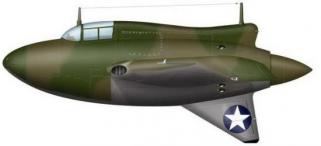 Northrop XP-56 "Black Bullet" - © Srecko Bradic - www.sreckobradic.com
Northrop XP-56 "Black Bullet" - © Srecko Bradic - www.sreckobradic.com
Chasseurs pousseurs - Pusher fighters
Les Vultee XP-54 Swoose Goose, Curtiss-Wright XP-55 Ascender (CW-24) et Northrop XP-56 Black Bullet étaient des prototypes de chasseurs développés pendant la seconde guerre mondiale mais jamais produits en série. Ils avaient la particularité d'avoir une cinématique inversée par rapport à la plupart des chasseurs de l'époque. Ces avions furent développés sur la proposition R-40C du 20 février 1940 de l'USAAC demandant des chasseurs au design non conventionnels avec des perfromances accrues par rapport aux chasseurs existants : un avion capable d'atteindre 850 km/h à 4 500 m d'altitude. 13 constructeurs reçurent l'appel d'offre, 7 proposèrent un projet et 3 furent retenus pour des prototypes : Vultee, Curtiss-Wright et Northrop.
The Vultee XP-54 Swoose Goose, Curtiss-Wright XP-55 Ascender (CW-24) and Northrop XP-56 Black Bullet were fighter prototypes developed during the Second World War but never manufactured. They had the particularity to have a reverse kinematics compared to most of the fighters of this period. These aircrafts were developped from the proposal R-40C issued on 20 February 1940 by USAAC requiring unconventional aircraft designs with improved performances over existing fighters an aircraft able to reach 530 mph at 14,800 ft. 13 manufacturers received the tender, 7 proposed a project and 3 were selected for prototypes : Vultee, Curtiss-Wright and Northrop.
Vultee XP-54

Vultee XP-54 - 1st prototype 41-1210 - Auteur inconnu - author unknown
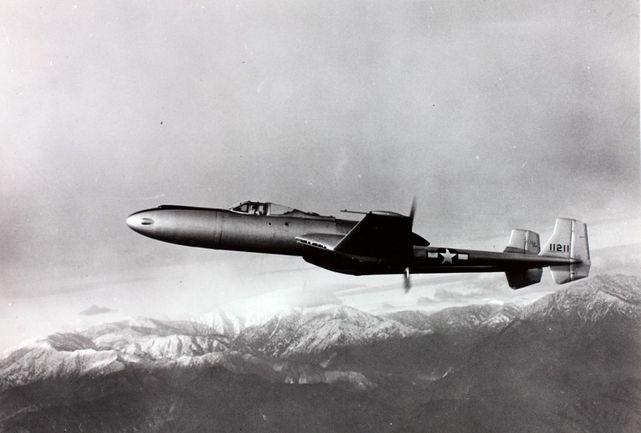
Vultee XP-54 - 2nd prototype 41-1211 Photo : auteur inconnu - author unknown
Développement - Development
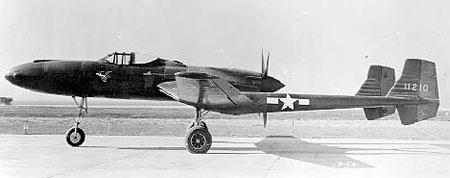
Vultee XP-54
© USAF (domaine public - public domain) - source : National Museum of USAF - www.nationalmuseum.af.mil
Le Vultee XP-54 emporta la compétition et fut le chasseur retenu. Développé par la Vultee Aircraft Company, il fut désigné Modèle 70 avec le premier moteur puis Modèle 84 avec le second moteur. Un contrat pour un premier prototype fut passé le 8 janvier 1941, puis un second prototype commandé le 17 mars 1942. Mais finalement, malgré un design vraiment innovant, les performances étaient médiocres et le projet fut abandonné. Son surnom "Swoose Goose" fut inspiré par le long nez de l'avion et par la chanson "Alexander was a swoose" (l'histoire d'Alexandre qui était mi-cygne et mi-oie).
The Vultee XP-54 won the competition and was selected. Developed by Vultee Aircraft Company, it was designated Model 70 with first engine then Model 84 with second engine. A contract for a first prototype was completed on January 8th, 1941, then a second prototype ordered on March 17th, 1942. But finally, despite its innovating design, the performances were poor and the project was cancelled. Its nickname "Swoose Goose" was inspired by its large nose section and by the son "Alexander was a swoose" (the story of Alexander who was half swan and half goose).
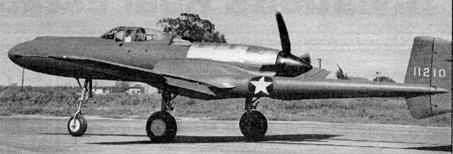
Vultee XP-54 - 1st prototype 41-1210 Photo : auteur inconnu - author unknown
Le XP-54 était un chasseur avec moteur propulsif, monté à l'arrière de la cabine entre les deux queues de l'avion, et équipé d'une hélice de 3.65 mètres. Son aile en V fut développée en collaboration avec la NACA (National Advisory Committee for Aeronautics) pour permettre l'intégration dans sa section de radiateurs et de refroidisseurs.
The XP-54 was a fighter with a "pusher engine", mounted in the rear part of the cabin, between the two tails of the aircraft, and fitted with a 12 feet propeller. Its wing had a V shape and had been developped with the NACA (National Advisory Committee for Aeronautics) to allow the integration in its section of radiators and intercoolers.
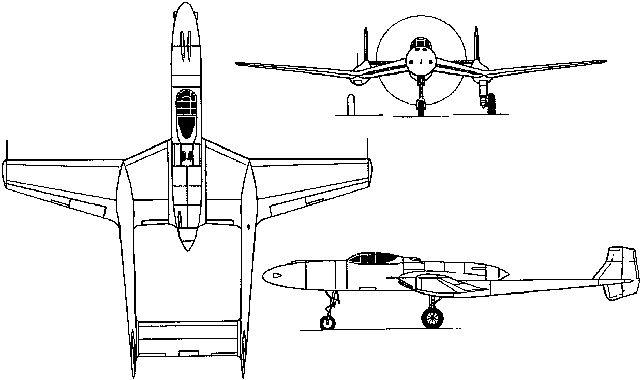
Vultee XP-54
Le moteur Pratt & Whitney X-1800 fut initialement proposé pour le XP-54 mais suite à l'arrêt de son développement, le moteur Lycoming XH-2470 à refroidissement liquide fut retenu.
The Pratt & Whitney X-1800 engine was initially proposed for the XP-54 but because its development was discontinued, the liquid-cooled Lycoming XH-2470 engine was finally chosen.
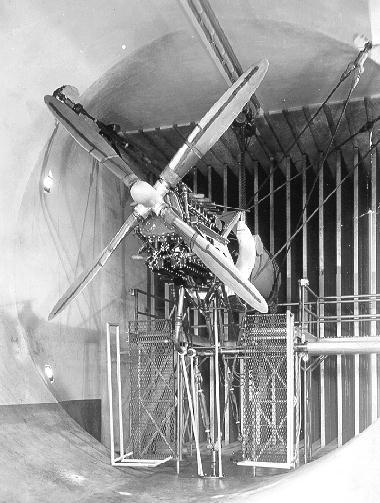 Lycoming XH-2470 - Photo : auteur inconnu - author unknown
Lycoming XH-2470 - Photo : auteur inconnu - author unknown
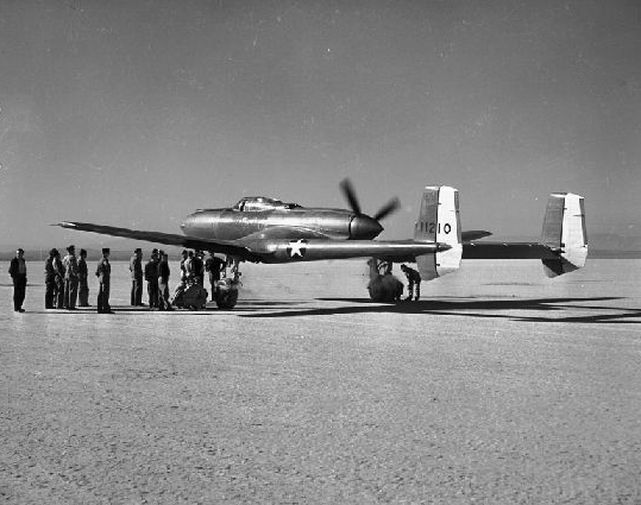
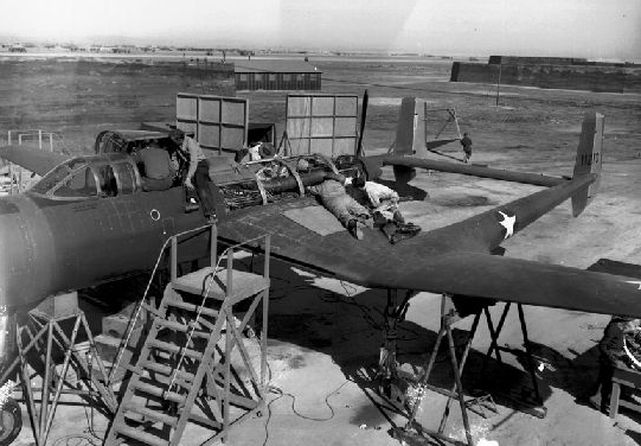
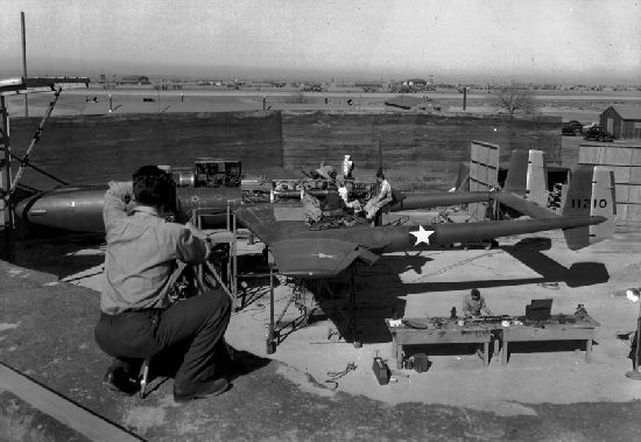
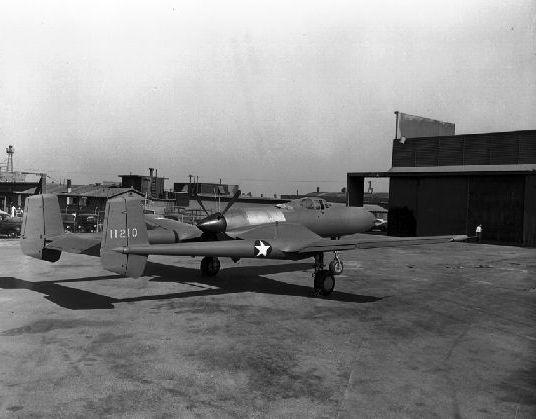
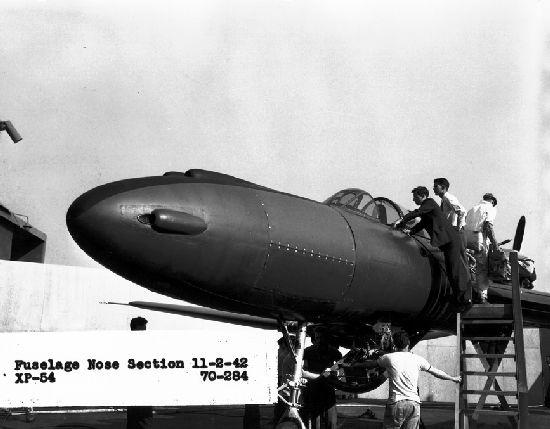
Vultee XP-54 - 1st prototype 41-1210 © San Diego Air and Space Museum Archive - www.sandiegoairandspace.org
En septembre 1941, il fut décidé que le XP-54 devienne un intercepteur de haute altitude. Il fallut donc lui ajouter un turbocompresseur et un blindage, d'où une augmentation de son poids à vide qui passa de 5 200 kg à 8 200 Kg.
In September 1941, it was decided that the XP-54 would be used for high-altitude interception. Extra turbo-supercharger and armor were thus added, wich involved an increase in empty weight from 11,500 to 18,000 lb.
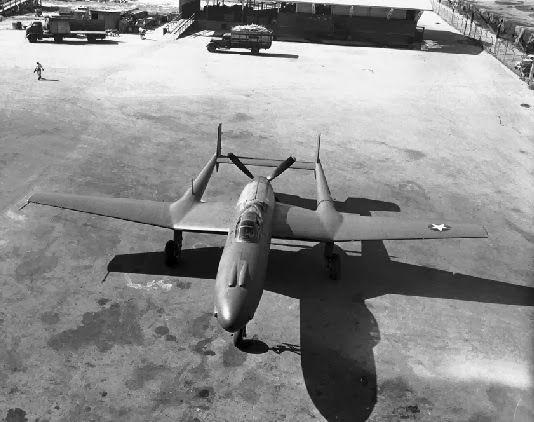
Vultee XP-54
© USAF (domaine public - public domain) - source : National Museum of USAF - www.nationalmuseum.af.mil
Le XP-54 se distinguait par de nombreuses specificités :
- son système d'accés au cockpit pressurisé : le siège du pilote servait d'ascenseur électrique depuis le sol.
- le système d'éjection, également complexe, s'effectuait par le bas.
- le nez de l'appareil pouvait pivoter verticalement de 3 degrés vers le haut et 6 degrés vers le bas. 2 canons T-9 de 37 mm étaient montés sur supports fixes dans le nez ainsi que 2 mitrailleuses de calibre 50 (12,7 mm) sur supports amovibles. Les mouvements du nez et des mitrailleuses étaient contrôlés par un viseur spécial à compensation.
The XP-54 was characterized by many different features :
- its entry system to the pressurized cockpit : the pilot's seat was used as an electrical elevator from the ground.
- the bail-out procedure, also complex, had to be operated downward.
- the nose section could pivot vertically 3 degrees up and 6 degrees down. 2 37 mm T-9 cannons were mounted in rigid mounts in the nose while 2 x 50 cal. machine guns were in movable mounts. Both nose and machine guns were controlled by a special compensating gun sight.
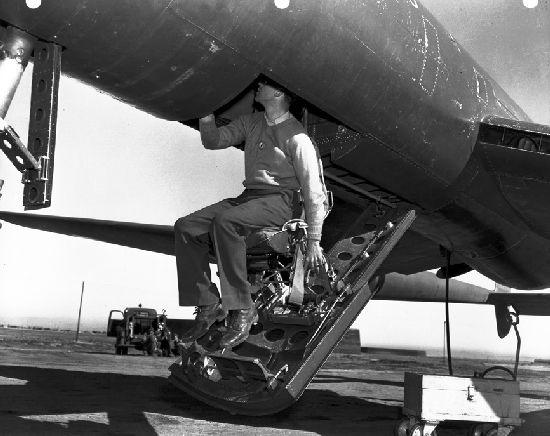
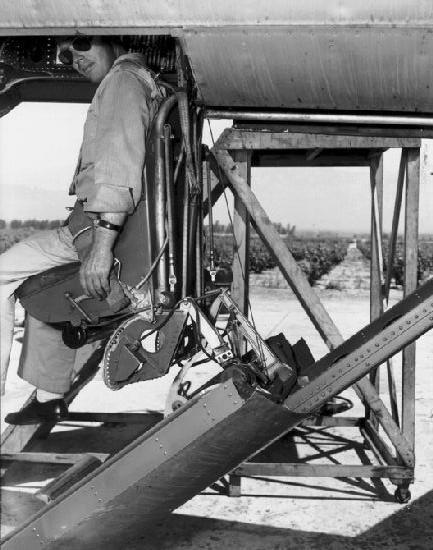
Vultee XP-54 - Le système d'accés du pilote - The pilot's entry system
Photos : auteur inconnu - author unknown

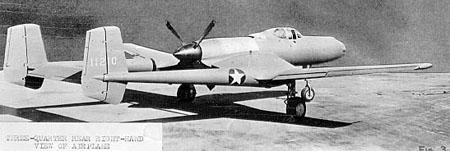
Vultee XP-54
© USAF (domaine public - public domain) - source : National Museum of USAF - www.nationalmuseum.af.mil
Les essais des prototypes - prototypes tests
Les vols d'essai du premier prototype 41-1210 furent effectués le 15 janvier 1943. Les performances furent décevantes. Après l'abandon du moteur XH-2470, et bien que le moteur Alison V-3420 semblait substituable, le délai du projet et son coût conduisit à la décision de ne pas passer en production. Ce premier prototype effectua en tout 86 vols d'essais.
The flights tests of the first prototype 41/1210 began on January 15th, 1943. Performances were not as expected. After the discontinuation of engine XH-2470, and although it appeared possible to substitute Allison V-3420 engine, the delay and cost of the project involved the decision not to consider production step.This first prototype flew 86 times in total.

Vultee XP-54 - 1st prototype 41-1210
© US Air Force Engineering Division (US National Archives) - www.enginehistory.org
Le second prototype, 42-108994 (mais peint par erreur 41-1211), effectua un seul vol d'essai avec un moteur expérimental GE supercharger puis fut utilisé en stock de pièces pour maintenir en vol le premier prototype. Les deux prototypes furent utilisés dans un programme expérimental jusqu'à l'apparition des problèmes du moteur Lycoming et au défaut de pièces de rechange.
The second prototype, 42-108994 (but mistakenly painted as 41-1211) made only one test flight fitted with the experimental GE supercharger engine, and was then used as spare parts stock used to keep the first prototype in flight. Both prototypes were used in an experimental program until problems with Lycoming engine and the lack of spare parts.
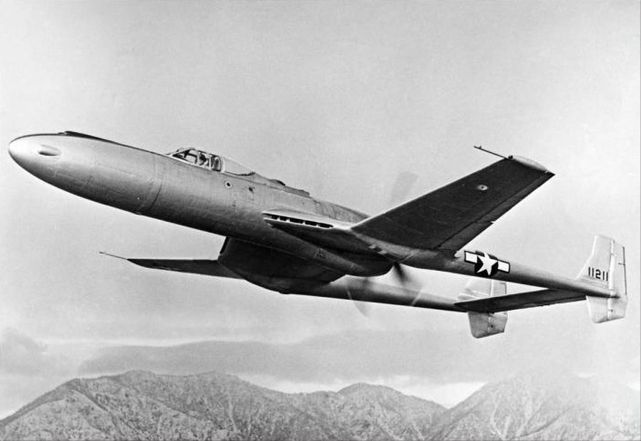
Vultee XP-54 - 2nd prototype 41-1211
© USAF (domaine public - public domain) - source : National Museum of USAF - www.nationalmuseum.af.mil
Fiche technique - Technical data
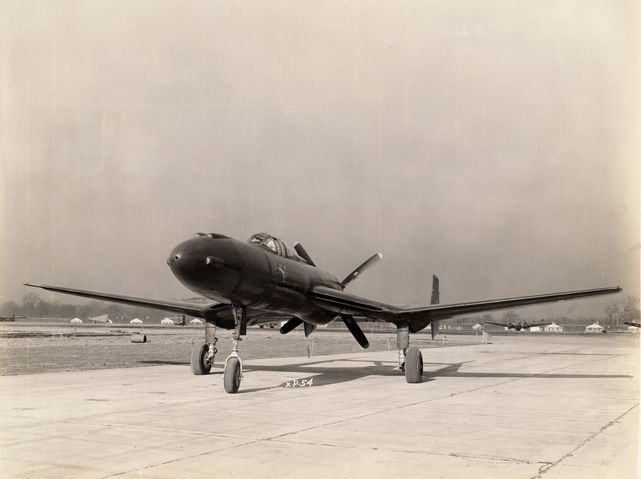
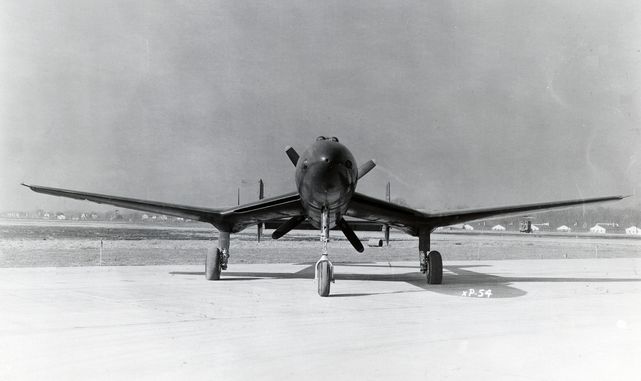
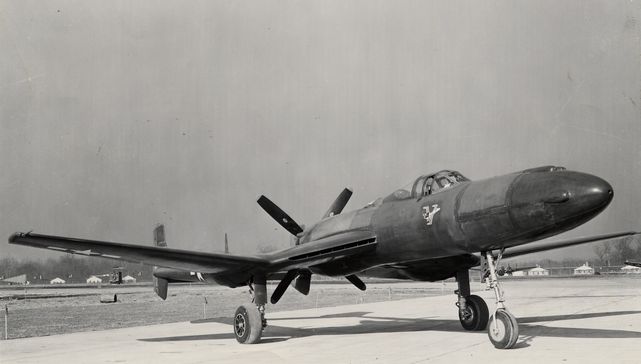
Vultee XP-54
© USAF (domaine public - public domain) - source : National Museum of USAF - www.nationalmuseum.af.mil
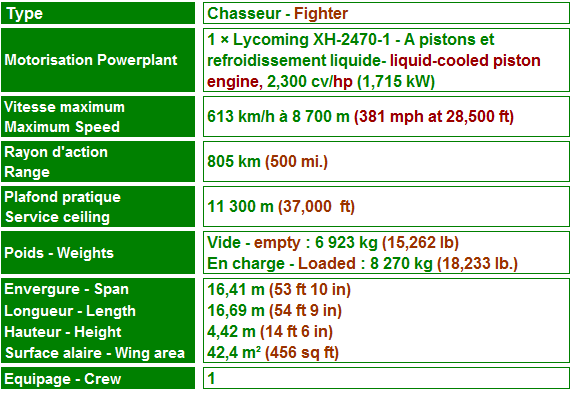
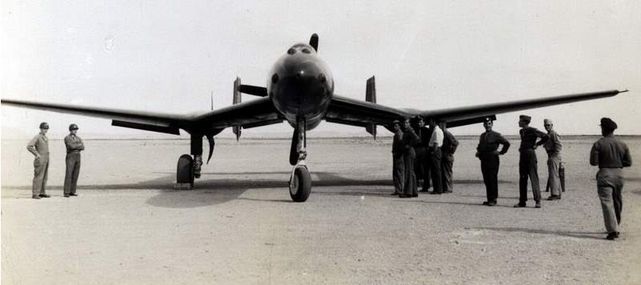
Vultee XP-54 - Photo : auteur inconnu - author unknown
Curtiss-Wright XP-55 "ASCENDER"

Curtiss-Wright XP-55 s/n 42-78845
Auteur inconnu - author unknown
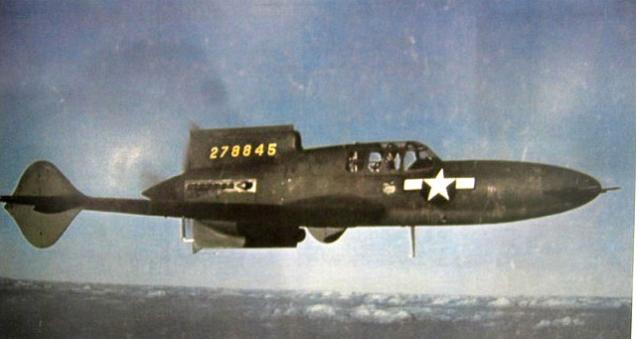
Curtiss-Wright XP-55 s/n 42-78845
Photo : auteur inconnu - author unknown
Développement - Development
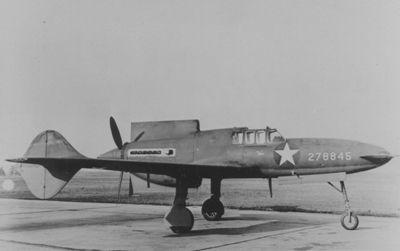
Curtiss-Wright XP-55 s/n 42-78845
© USAAF (domaine public - public domain)
Suite au contrat reçu de l'armée le 22 juin 1940 pour une étude préliminaire et des essais en tunnel, la société Curtiss-Wright baptisa le projet P-55. Malgré l'accueil mitigé de l'USAAC suite aux premiers essais, Curtiss-Wright décida de continuer pour elle-même et fabriqua une maquette à l'échelle 1 appelé CW-24B (s/n 42-39347).
According to the contract received from the Army on 22 June, 1940 for preliminary engineering study and wind tunnel tests, the Curtiss-Wright company designated the p^roject P-55. Despite the fact that USAAC was not really satisfied with the results of these tests, Curtiss-Wright made the decision to build upon itself a flying full-scale model which designated CW-24B (s/n 42-39347).
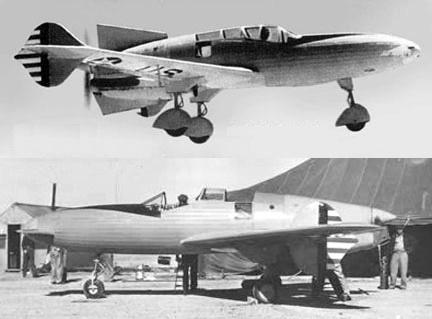
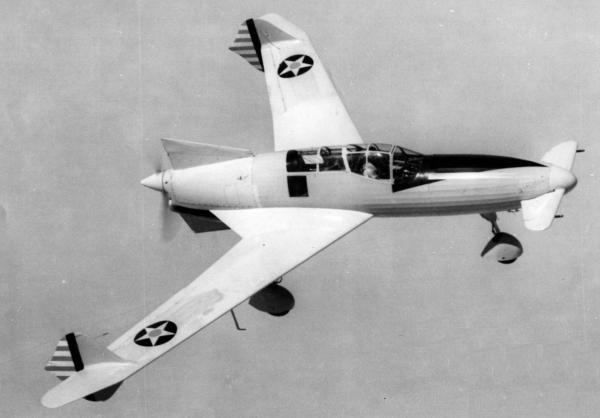

Curtiss-Wright CW-24B - Photos : auteur inconnu - author unknown
Le banc d'essai volant fut effectué avec un moteur Menasco C68-5 en ligne de 275 CV (205 kW). Le fuselage en tubes d'acier soudés était recouvert de tissu et doté d'ailes en bois. Le train d'atterrissage était fixe.
The flying testbed was powered by a 275 HP (205 kW) Menasco C68-5 inline engine. The welded steel tube fuselage was covered with fabric and fitted with wooden wings. The undercarriage was non-retractable.
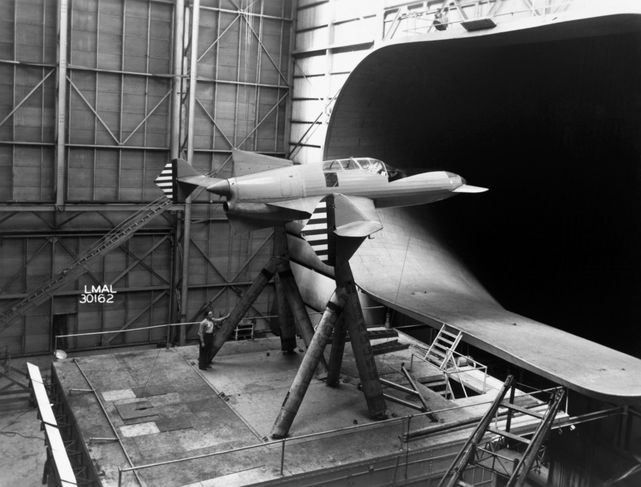
Curtiss CW-24B - Langley Aeronautical Laboratory, Hampton, Virginia (USA)
© NASA (domaine public - public domain)
L'U.S.A.A.F. commanda 3 prototypes le 10 juillet 1942 sous le nom XP-55. Leurs numéros de série furent 42-78845, 42-78846 et 42-78847. Comme pour le XP-54, le moteur Pratt & Whitney X-1800 fut initialement proposé mais suite à l'arrêt de son développement, le moteur en ligne Allison V-1710 (F16) de 1 000 CV (750 kW) et à refroidissement liquide fut retenu. Le XP-55 fut surnommé "Ascender (ascendeur)" à la suite d'une blague d'un ingénieur Curtiss et ce nom resta et devint officiel.
L'U.S.A.A.F. ordered 3 prototypes on July 10th, 1942 under the designation XP-55. Their serial numbers were 42-78845, 42-78846 et 42-78847. As for the XP-54, the Pratt & Whitney X-1800 engine was initially proposed but because its development was discontinued, the liquid-cooled 1,000 HP (750 kW) Allison V-1710 (F16) inline engine was finally chosen. The XP-55 was nicknamed "Ascender" after a joke of a Curtiss engineer and the name stuck and became official.
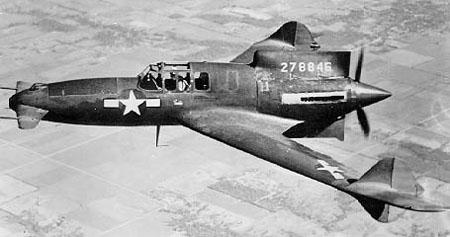
Curtiss-Wright XP-55 s/n 42-78846
© USAAF (domaine public - public domain) - source : National Museum of USAF - www.nationalmuseum.af.mil
L'armement initial fut prévu avec 2 canons de 20 mm et 2 mitrailleuses de 12,7 mm. Lors de la phase maquette, les 2 canons furent remplacés par 2 mitrailleuses de 12,7 mm et le moteur fut finalement un V-1710-95 (F23R) de 1 275 CV (951 kW). Un levier permettant de libérer l'hélice jettison était situé dans le cockpit pour les phase d'éjection.
The initial armament was to be 2 x 0.76 in. cannons and 2 x 0.50 in. machine guns. During the full-scale model initial phase, the 2 cannons were replaced by 0.50 in. machine guns and the engine finally chosen was a 1,275 HP (951 kW) V-1710-95 (F23R). A lever allowing the release of the propeller jettison was located inside the cockpit for bailout procedure.
Curtiss-Wright XP-55 - 2nd prototype (42-78846).
© AIRBOYD - YouTube

Les essais des prototypes - prototypes tests
Prototype 1 (s/n 42-78845) :
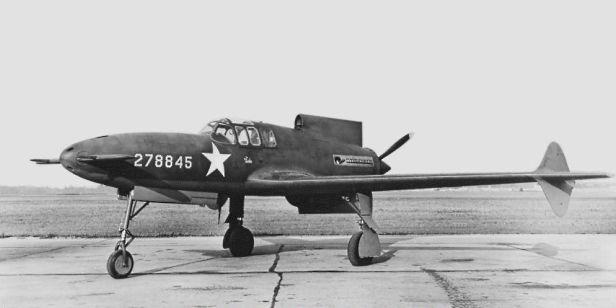
Curtiss-Wright XP-55 s/n 42-78845
© USAAF (domaine public - public domain)
Terminé le 13 juillet 1943, et ayant la même aérodynamique que le CW-24B, il effectua son premier vol le 19 juillet 1943 sur le terrain Scott Field de l'Armée, près de l'usine Curtiss-Wright de St-Louis (Missouri), piloté par J. Harvey Gray.
Completed on Jule 13th, 1943, with the same aerodynamic configuration as the CW-24B, it made its first flight on July 19th, 1943 from the Army's Scott Field near the Curtiss-Wright plant in St-Louis (Missouri), flown by J. Harvey Gray.
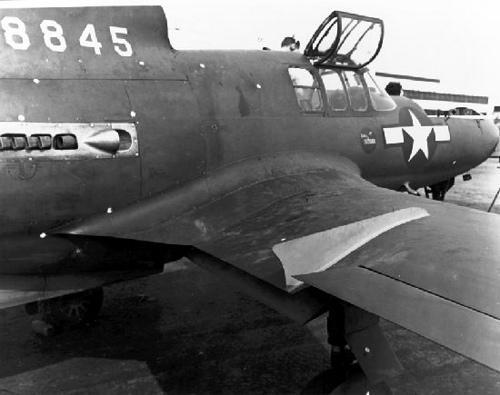
Curtiss-Wright XP-55 s/n 42-78845
Photo : auteur inconnu - author unknown
La course de décollage fut très longue et des modifications sur le compensateur de nez, le compensateur d'ailerons et les volets furent apportées. Le 15 novembre 1943, lors d'un vol d'essai au décrochage, le XP-55 basculma sur le dos et chuta, hors de contrôle. Gray sauta en parachute et l'avion fut détruit.
The takeoff run was excessively long and modifications were performed on the nose elevator, the aileron trim and the flaps. On November 15th, 1943, during a stall performance flight test, the XP-55 flipped over on its back and fell totally uncontrolled. Gray parachuted and the aircraft was destroyed.
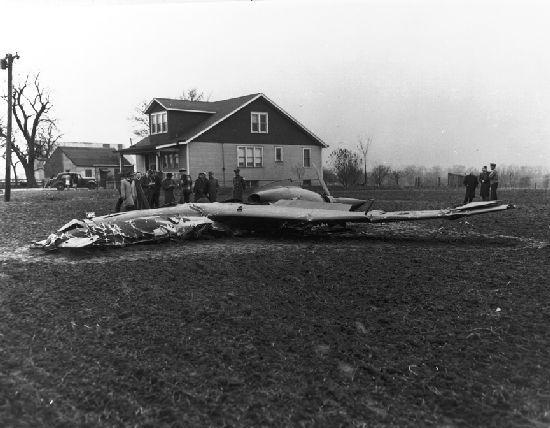

Curtiss-Wright XP-55 - 1st prototype (42-78845). Après le crash - Following the crash.
© San Diego Air and Space Museum Archive - www.sandiegoairandspace.org
Prototype 2 (s/n 42-78846) :
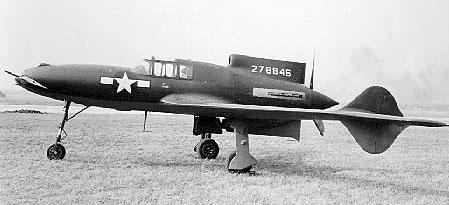
Curtiss-Wright XP-55 - 2nd prototype (42-78846).
© USAAF (domaine public - public domain) - source : National Museum of USAF - www.nationalmuseum.af.mil
Curtiss-Wright XP-55 - 2nd prototype (42-78846).
© AIRBOYD - YouTube
Très similaire au premier prototype, le second prototype fut légèrement modifié au niveau du compensateur de nez et de l'équilibrage des gouvernes et des volets sur les ailerons. Le premier vol fut effectué le 9 janvier 1944 mais ces vols d'essais furent limités pour éviter les décrochages.
Very similar to the first prototype, the second prototype had a slightly modified nose elevator and a change from balance tabs to spring tabs on the ailerons. The first flight was made on January 9th, 1944 but all flight testst were restricted to avoid stall accident.
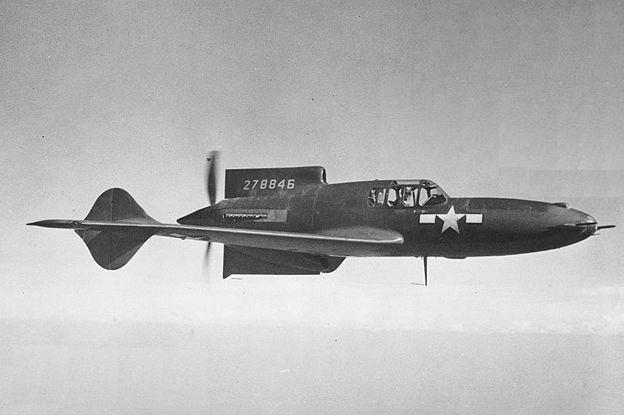
Curtiss-Wright XP-55 - 2nd prototype (42-78846).
Photo : auteur inconnu - author unknown
Il fut ensuite modifié comme le troisième prototype (ajout d'un avertisseur de décrochage) et put alors effectuer des vols d'essais officiels pour l'USAAF entre le 16 septembre et le 2 octobre 1944.
It was then modified to the standards of the third prototype (addition of a stall warning device) and underwent official USAAF flight tests between 16 September and 2 October, 1944.
Prototype 3 (s/n 42-78847) :
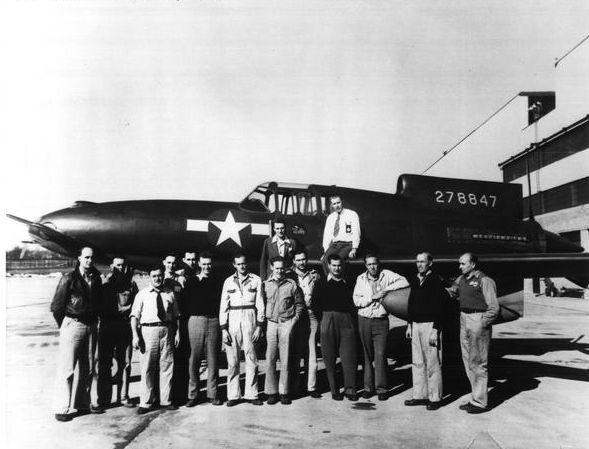
Curtiss-Wright XP-55 - 3rd prototype (42-78847).
Photos : auteur inconnu - author unknown
Curtiss-Wright XP-55 - 3rd prototype (42-78847).
© Jaglavak Military - YouTube
Equipé de 4 mitrailleuses, il fut amélioré pour éviter les problèmes de décrochage du premier prototype : ajout de saumons d'aile de 122 cm, augmentation de la limite de course du compensateur de nez. Le premier vol fut effectué le 25 avril 1944.
Fitted with 4 machine-guns, it was improved to avoid stall issues detected with the first prototype : addition of 4 foot wingtip extensions, increase of the limits of the nose elevator travel. The first flight was made on 25th April, 1944.
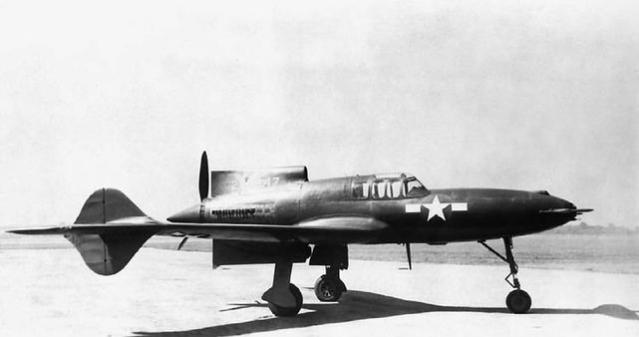
Curtiss-Wright XP-55 - 3rd prototype (42-78847).
Photos : auteur inconnu - author unknown
Ce prototype fut détruit le 27 mai 1945 lors d'un vol de clôture avec un P-38 et un P-51 au septième War Bond Air Show organisé par l'USAAF à Wright Field, Dayton, Ohio : l'avion se crasha et le pilote, William C. Glasgow, fut tué ainsi que 2 ou 4 civils au sol.
This prototype was destroyed on 27 May, 1945 during a closing flight with a P-38 and a P-51 at the Seventh War Bond Air Show organized by the USAAF at Wright Field, Dayton, Ohio : the aircraft crashed and the pilot, William C. Glasgow, was killed with 2 or 4 civilians on the ground.
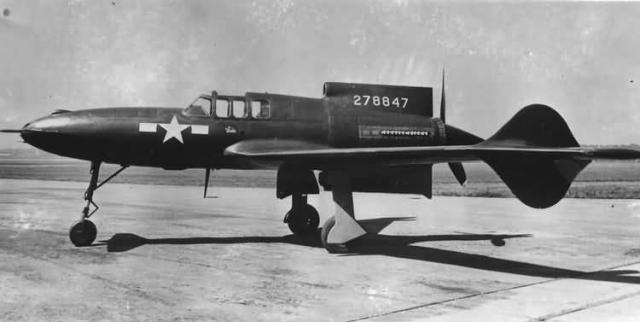
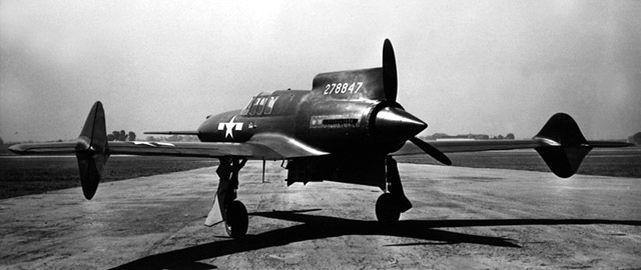
Curtiss-Wright XP-55 - 3rd prototype (42-78847).
Photos : auteur inconnu - author unknown
Les piètres performances du XP-55, souvent inférieures à celles des chasseurs conventionnels, à une période où les premiers jets étaient déjà en développement, conduirent à l'arrêt du projet XP-55.
The poor performances of the XP-55, often inferior to that of conventional fighters, at a period when first jet-powered fighters were already in development, led to the termination of the XP-55 project.
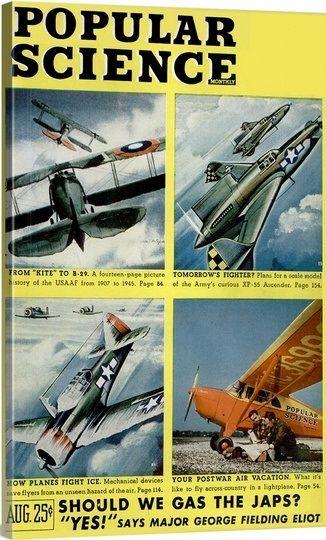

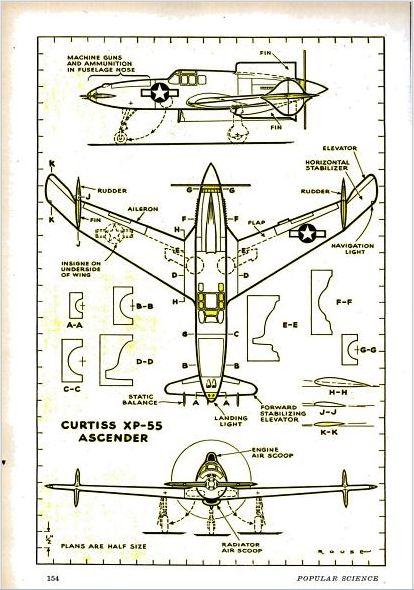
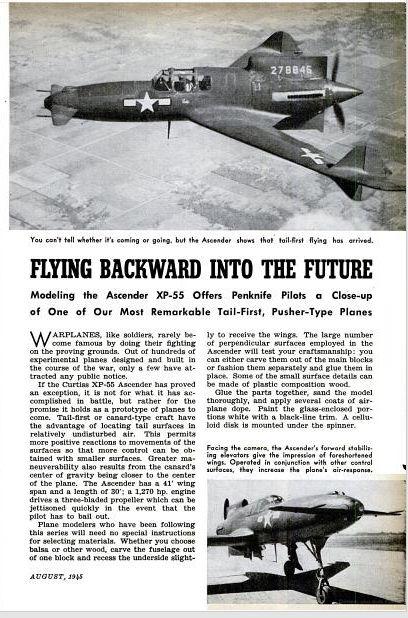
Article paru dans un magazine de science en août 1945.
Information published in a science magazine in August 1945.
Fiche technique - Technical data
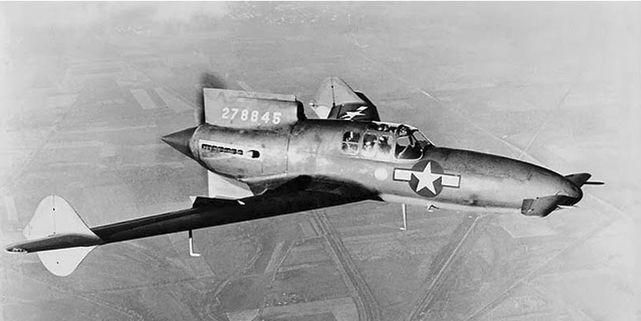
Curtiss-Wright XP-55 s/n 42-78845
© USAAF (domaine public - public domain)
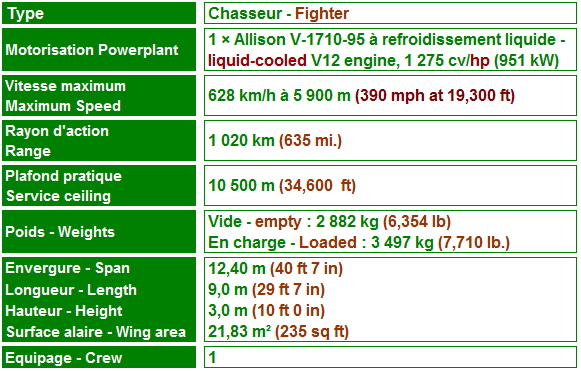
Northrop XP-56
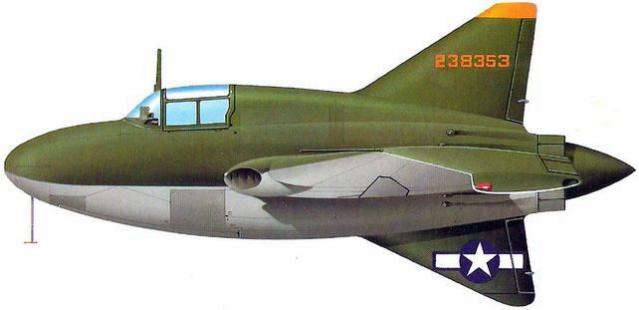
Northrop XP-56 s/n 42-38353
Auteur inconnu - author unknown
Northrop XP-56 - © Jaglavak Military - YouTube
Développement - Development
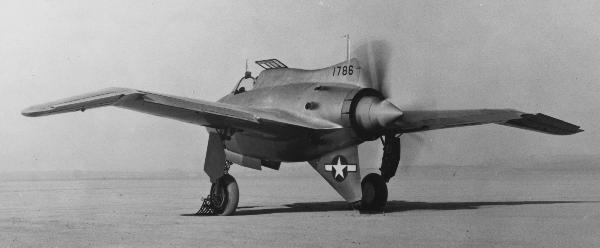
Northrop XP-56 'Black Bullet' (s/n 41-786) Photo : auteur inconnu - author unknown
L'idée du Northrop XP-56 était plutôt radicale à cette époque : un avion sans dérive, pour réduire la résistance aérodynamique, équipé d'un moteur expérimental et fabriqué avec un métal nouveau, le magnésium qui ne pouvait pas être riveté mais soudé. Le projet fut désigné N-2 avec 5 variantes qui se différenciaient par le moteur et l'armement (N-2, N-2A, N-2B, N-2C et N-2D).
The idea of Northrop XP-56 was rather radical at that time : an aircraft without tail, to reduce the aerodynamic drag, fitted with an experimental engine and made of novel metal, the magnesium, which could not be riveted but welded. The project was designated N2 with 5 versions which were different by the engine and the armament (N-2, N-2A, N-2B, N-2C and N-2D).
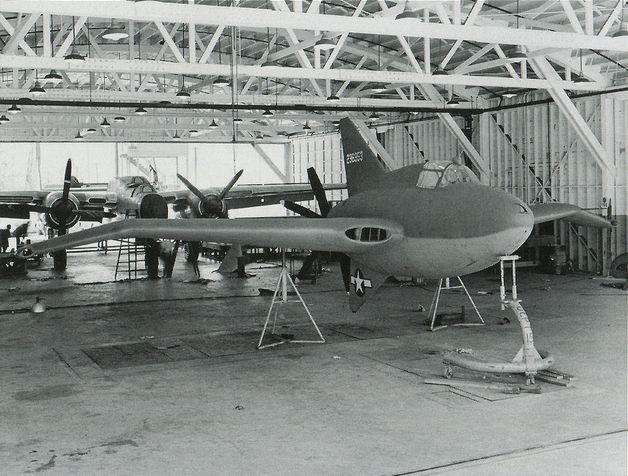
Northrop XP-56 'Black Bullet' (s/n 41-786) © Tom Wigley

L'armée commanda une étude et des maquettes de soufflerie à Northrop le 22 juin 1940 ; une maquette à l'échelle 1/5° fut testée à partir du 9 septembre dans la soufflerie du California Institute of Technology.
The Army ordered a study and models for wind tunnels to Northrop on 22 June, 1940. A model at the scale 1/5° was tested from 9th September at the wind tunnel of California Institute of Technology.
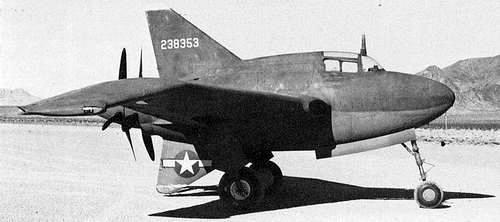
Northrop XP-56 (s/n 42-38353) Photo : auteur inconnu - author unknown
Un prototype fut commandé le 26 septembre de la même année. Comme pour le XP-54 et le XP-55, ce prototype de XP-56 fut d'abord conçu avec le moteur Pratt & Whitney X-1800. Mais suite à l'arrêt de ce moteur, son développement fut retardé à mars 1942 et un second fut commandé le 15 décembre 1941, équipé du moteur Pratt & Whitney R2800. Entretemps, une maquette à l'échelle 1:1 pour l'aménagement intérieur, fut testée le 15 juillet 1941. Mais les fabrications des deux prototypes prirent du retard.
A prototype was ordered on 26th September the same year. As for the XP-54 or XP-55, this prototype of XP-56 was originally designed with Pratt & Whitney X-1800 engine. But due to this engine development stop, its development was postponed to March 1942 and a second prototype was ordered on 15th December 1941, fitted with the engine Pratt & Whitney R2800. In the meantime, a model at scale 1:1 designed for interior configuration was tested on 15th July, 1941. But construction of both prototypes were delayed.
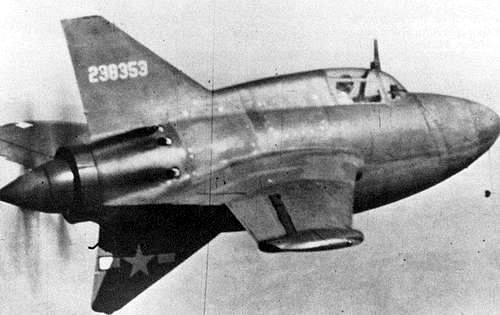
Northrop XP-56 (s/n 42-38353) Photo : auteur inconnu - author unknown
Le premier prototype fut livré à Muroc Dry Lake (Californie) le 12 avril 1943 pour des essais de roulage. Puis il fut envoyé le 3 septembre à Rogers Lake (California) pour effectuer son premier vol d'essai, le 6 septembre, piloté par John Myers. Ce vol dura 30 secondes à 2 mètres. Un second vol le même jour dura 1 minute. La queue fut agrandie après ce vol. Le 8 octobre, Myers effectua des essais de roulage à grande vitesse (210 km/h), ayant prévu un 3° vol.
The first prototype arrived at Muroc Dry Lake (California) on 12 April 1943 for taxiing tests. Then it was sent on September 3rd to Rogers Lake (California) to make its first trial flight, on September 6th, flown by John Myers. This flight lasted 30 seconds at 2 meters. The tail was modified (extension) after this flight. A second flight the same day lasted 1 minute. On October 8th, Myers made taxiing tests at high speed (130 mph), expecting to make a 3rd flight.
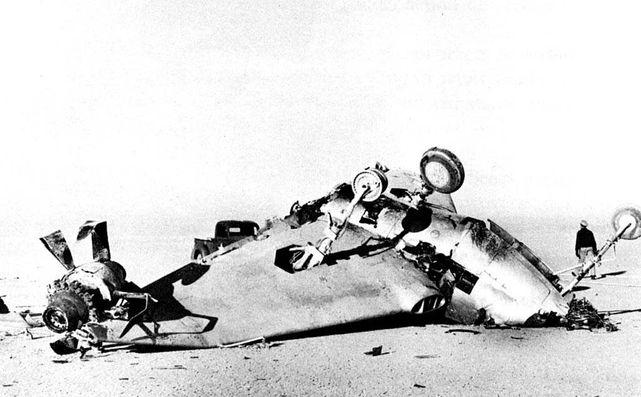
Northrop XP-56 - Après l'accident - After the accident Photo : auteur inconnu - author unknown
Mais le pneu gauche éclata et l'avion effectua 2 tonneaux et demi et finit sur le dos. Le pilote fut éjecté mais indemne, avec quelques fractures. L'avion était définitivement hors d'usage.
But the left tire burst and the plane rolled over twice and a half and finished on the back. The pilot was ejected but unscathed, with some fractures. The plane was definitively out of use.
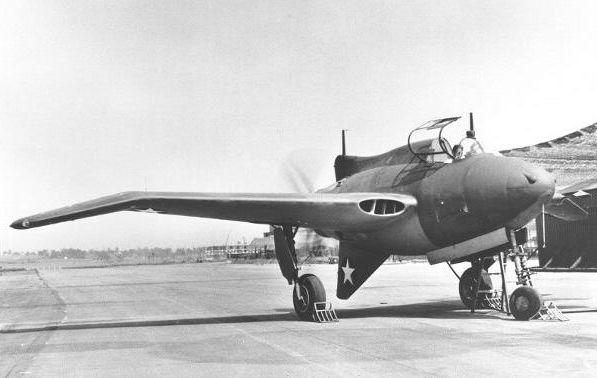
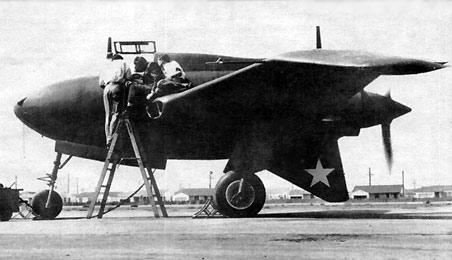
Northrop XP-56 'Black Bullet' - Photos : auteur inconnu - author unknown
Le second prototype fut légèrement modifié (nez alourdi, nouveaux pneumatiques, agrandissement de la dérive) et fut envoyé à Road Lake pour un vol d'essai le 23 mars 1944, piloté par Harry Crosby. Le vol dura 10 minutes et Crosby atteignit 750 m et 290 km/h. Au bout de 6 vols, les performances restèrent insuffisantes : 547 km/h et 6 000 m d'altitude pour 750 km/h et 7 600 m attendus. Et la stabilité de l'avion restait relative.
The second prototype was slightly modified (heavier nose, new tyres, enlarged tail) and was sent at Road Lake for a test flight on March 23rd, 1944, flown by Harry Crosby. The flight lasted 10 minutes and Crosby reached 2 500 ft and 180 mph. After 6 flights, the performances remained poor : 340 mph and 19 700 ft versus 465 mph and 25 000 ft expected. And the stability of the aircraft was not good.
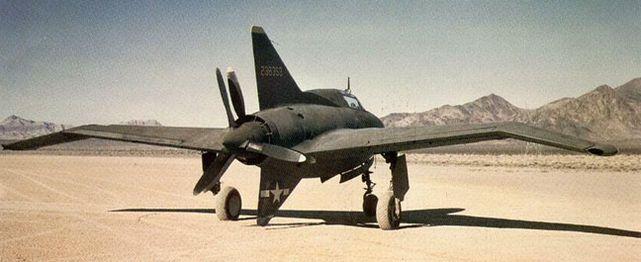
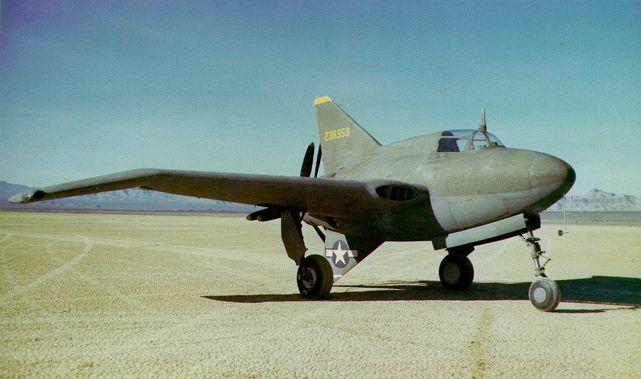
Northrop XP-56 'Black Bullet' (s/n 42-38353) Photo : auteur inconnu - author unknown
Au 9e vol, l'appareil fut endommagé à la dérive ventrale. Après avoir été réparé chez Northrop, l'avion vola une 11e fois le 11 août 1944, mais les performances étaient toujours médiocres. L'avion fut stocké en 1945 à Moffet Field en attendant des essais en soufflerie qui n'eurent jamais lieu et rejoignit le National Air and Space Museum fin 1947.
During its 9th flight, the ventral fin was damaged. After being repaired, the aircraft made its 10th flight but performances remained poor. The plane was stored in 1945 in Moffet Field while waiting for wind tunnel tests which never happened and was sent to the National Air and Space Museum at the end of 1947.
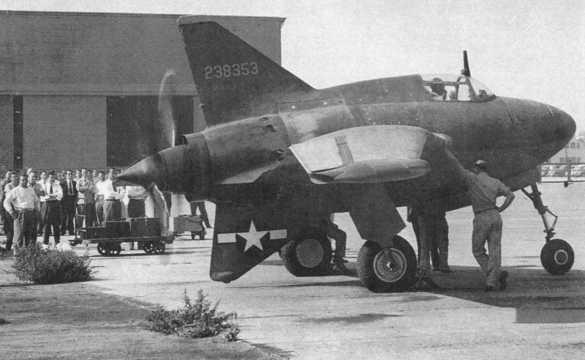
Northrop XP-56 'Black Bullet' (s/n 42-38353) Photo : auteur inconnu - author unknown
Versions et prototypes - Variants and prototypes
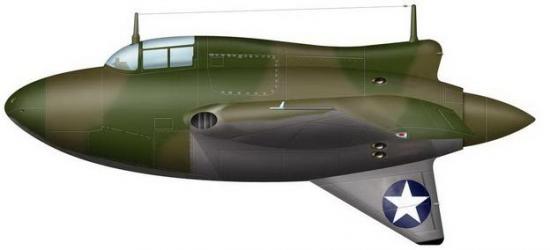
Northrop XP-56 "Black Bullet"
(© Srecko Bradic - www.sreckobradic.com)
- N-2 : moteur/engine Pratt & Whitney R-2800-A5G, 2 canons/cannons 20 mm et/and 2 mitrailleuses/machine guns 12,7 mm ;
- N-2A : moteur/engine Pratt & Whitney X-1800-A2G suralimenté/supercharged, 2 canons/cannons 20 mm et/and 2 mitrailleuses/machine guns 12,7 mm ;
- N-2B : moteur/engine Pratt & Whitney X-1800-A3G turbocompressé/turbocharged, 2 canons/cannons 20 mm et/and 2 mitrailleuses/machine guns 12,7 mm ;
- N-2C : moteur/engine Allison V-1710-E9, 2 canons/cannons 20 mm et/and 2 autres/other 30 mm.
- N-2D : moteur/engine Pratt & Whitney R-1830-C5G, 2 canons/cannons 20 mm et/and 2 autres/other 30 mm.
Prototypes :
No 1 : s/n 41-786
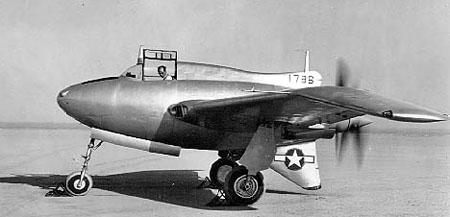
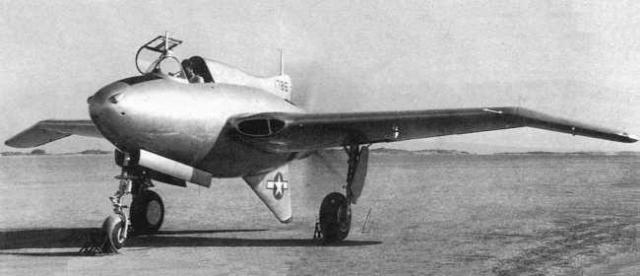
Northrop XP-56 'Black Bullet' - Premier avion - First aircraft.
(USAF - Domaine public - Public domain)
No 2 : s/n 42-38353
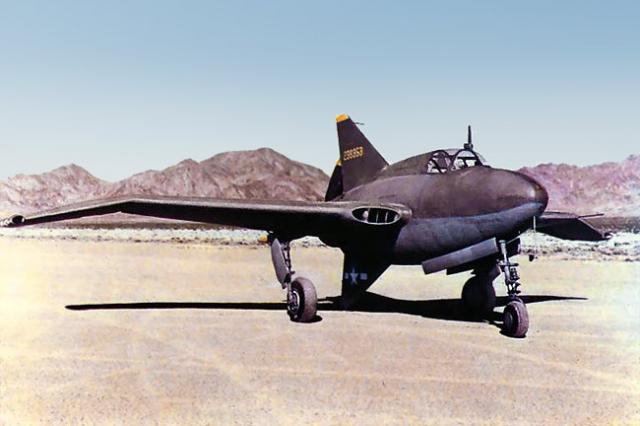
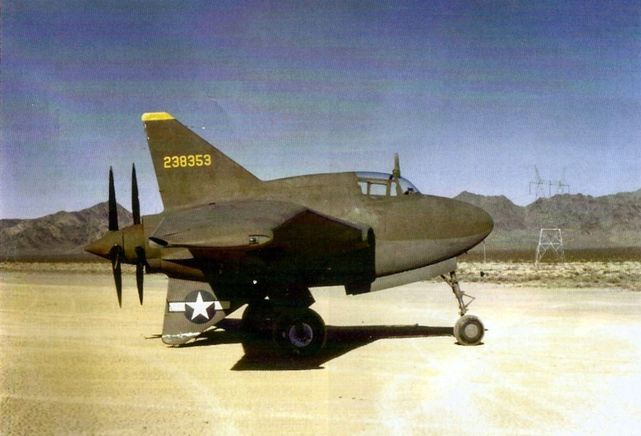
Northrop XP-56 'Black Bullet' (s/n 42-38353) - Second avion - Second aircraft.
(US Federal Government - Domaine public - Public domain)
Fiche technique - Technical data
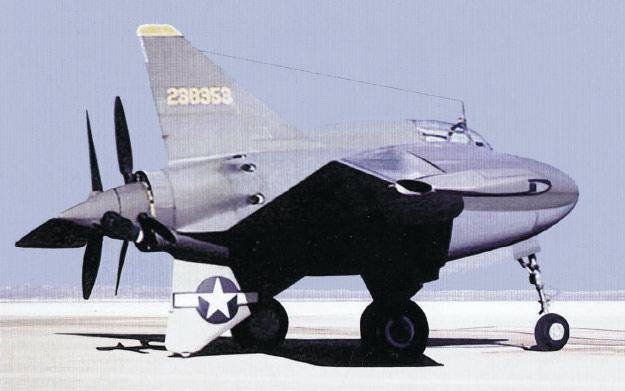
Northrop XP-56 'Black Bullet' (s/n 42-38353)
Photo : auteur inconnu - author unknown
